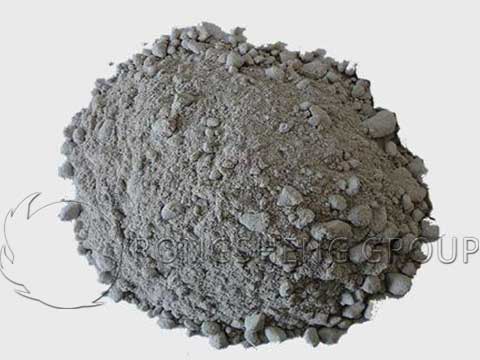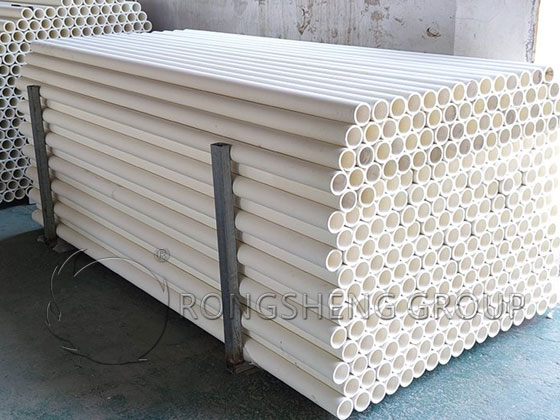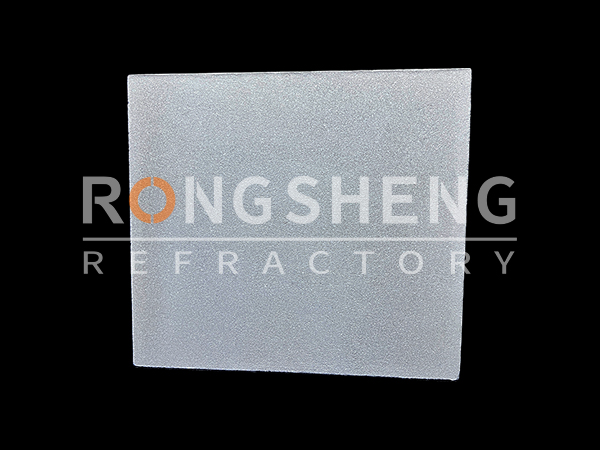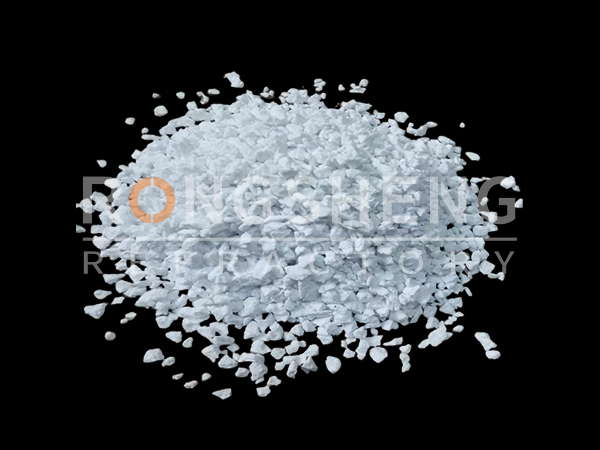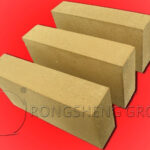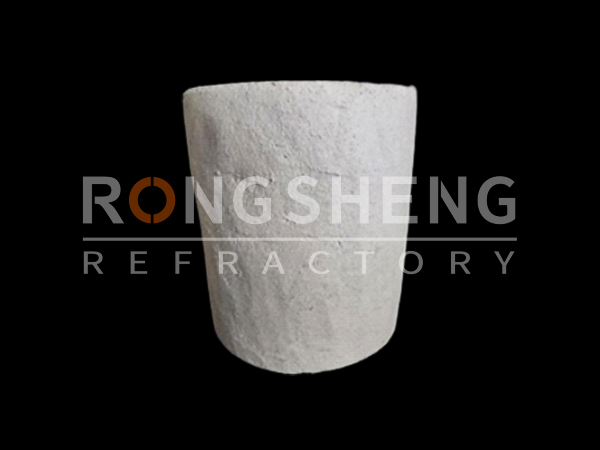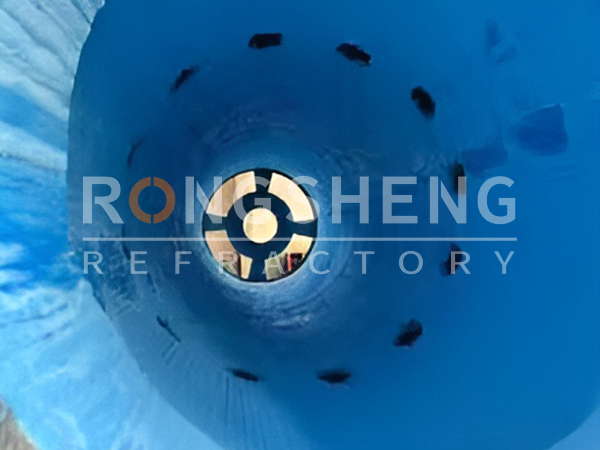Alumina Rotary Kiln Refractory
Aluminum Smelting Industry Description
The world’s annual aluminum output takes the top position among nonferrous metals production, far larger than other nonferrous metals. Refractory material consumption of aluminum industry is much more than the total consumption of copper, lead and zinc smelting. The production of aluminum including 2 steps, first, produces alumina from bauxite by wet method, second, uses industrial alumina as raw material, adopts molten salt electrolytic process to produce aluminum. High temperature kilns used for aluminum production are rotary kiln, molten salt electrolytic tank, aluminum smelting furnaces, etc.
Refractory material consumption of industrial aluminum smelting furnaces is large, that’s because, during producing Al2O3, basic material will have very severe corrosion to alumina rotary kiln refractory material. When smelting aluminum, even the temperature is relatively low, aluminum liquid has very strong permeability, once it permeates into firebricks, it will react with SiO2 and reduces Si from the firebricks, which will destroy their structure and cause the looseness, spalling and damage of furnace lining.
So SiO2 containing refractory materials are also not suitable for the masonry of aluminum smelting equipments. High alumina bricks and carbon refractories are usually used for ordinary aluminum industry furnaces.
Alumina Rotary Kiln Description
Rotary kiln is thermal equipment for the sintering of alumina clinker. During manufacturing alumina, alumina bauxite, pure alkali and lime are proportionally loaded into rotary kiln, calcined at 1200~1300℃, the calcined bauxite clinker needs to be further processed to make Al(OH)3. After sintering in 1200℃ rotary kiln, Al2O3 are produced by Al(OH)3.
The sintering process are: high temperature flame and the raw material reversely move in the rotary kiln. Lime and bauxite raw material pulp(contains 40% water) or Al(OH)3(contains 12%~18% water) is loaded form kiln tail. After low temperature drying and dehydration, heating and high temperature sintering, calcined clinker will be unloaded from kiln head, while high temperature gas flows from kiln head to tail. So the kiln can be divided into preheating zone and high temperature sintering zone. To avoid pulp material adhering to kiln lining during sintering and to strengthen heat exchange efficiency, chains are set between refractory material brickwork, when kiln body is in rotary motion, the chains will continuously strike raw materials and lining bricks, which will affluence the service life of kiln lining.
Alumina Rotary Kiln Refractories Properties
The rotary kiln body used for alumina production is steel board welded cylinder, inner lining is constructed by refractories. The working environment of refractory materials are harsh, so they should have these characteristics: strong alkaline corrosion resistance, can continuously work at 1200~1300℃ high temperature and won’t damage, can resist material erosion and impaction, can resist the souring of high temperature air current.
Alumina Rotary Kiln Refractories Category
Reractories used in rotary kiln are mainly high alumina bricks and magnesia bricks. Low temperature drying kiln usually adopts fireclay bricks as inner lining refractory. At sintering zone, there is often an insulating lining between kiln wall and firebricks inner lining, which is often built by diatomite bricks, ceramsite bricks or refractory fiber felts.
| Item | Kiln name | Refractory material |
| Sintering zone(1200~1300℃) | Alumina clinker sintering kiln, aluminum hydroxide calcination kiln | Low calcium aluminate bonded refractory concrete, phosphate bonded high alumina bricks, high alumina bricks, fireclay bricks |
| Cooling zone | Alumina clinker sintering kiln, aluminum hydroxide calcination kiln | phosphate bonded high alumina bricks, fireclay bricks |
Alumina Rotary Kiln Unshaped Refractories
Currently, unshaped refractories are popularly used in aluminum industry. Rotary kiln inlet where constantly suffers materials high temperature abrasion and thermal shock stress, is vulnerable to deformation damage. At alumina clinker sintering kiln transition zone, the temperature is between 400℃~1000℃, alkaline corrosion and mechanical damage are severe, the inner lining often spalls or falls off. So steel fiber castable which has good abrasion resistance is are usually used in rotary kiln.
| Item | GJZL-40 | GJZL-45 | GJZL-70 | |
| Al2O3 % ≥ | 40 | 45 | 70 | |
| CaO % | / | ≤2.5 | ≤2.1 | |
| Refractoriness ℃ | 1690 | 1710 | ≥1790 | |
| Working temperature ℃ | 1250 | 1300 | 1450 | |
| Fastness to alkali | I | I | II | |
| Bulk density g/cm3 | 1200℃,3h | 1.80 | 2.30 | 2.57 |
| Linear change rate % | 1200℃,3h | -0.5 | -0.3 | -0.2 |
| Cold crushing strength Mpa | 1200℃,3h | 30 | 50 | 70 |
| Modulus of rupture Mpa | 1200℃,3h | 8 | 9 | 10 |
| Characteristics | Base resistance, abrasion resistance, thermal shock resistance, energy saving | Alkali resistance, abrasion resistance, spalling resistance, thermal shock resistance | Alkali resistance, high strength, spalling resistance, thermal shock resistance | |
| Applications | Transition zone, preheating zone, kiln hoop | Kiln inlet, preheating zone, chains zone | Decomposition zone, kiln inlet, cooling zone feeding chamber, cooler. | |
